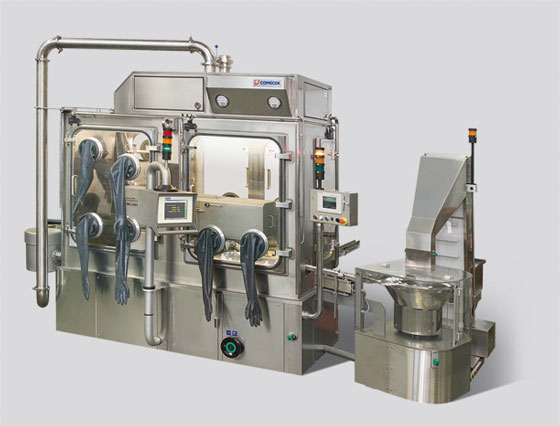- Products
- Video
- Events
- News
- Landing
- Pages

Barrier is a generic term used to define any physical obstacle to contamination. The Category of PBSs (Protective Barrier Systems) can include any kind of protection apparatus like curtains of the clean room, biosafety cabinets, goggles, gloves, face shields and also isolators. What is usually not fully clear is that all these systems offer different degrees of protection (i.e. lower than isolator): pity that they are often used as synonimous! An Isolator is a barrier, but a barrier isn’t necessarily an Isolator…
The arguments to consider when a technical solution has to be choosen are the following:

The cabinet cannot be considered a real Isolator (that must be fully closed), in any case the operator protection is ensured by the air flow. During the machine validation, using a tracer (smoke) and anemometers, it is possible to demonstrate that air can enter from the 4 foreseen openings only. NO air and than NO contamination is escaping. This is an example of Open Isolator: the process and transfer are highly isolated. The typical application is for production process which foresee small openings for exiting of bottles or vials.
If you wish to receive our monthly newsletter subscribe here
Accedi e scarica ora
Log In Recupero passwordNovità, inviti ad eventi e fiere direttamente nella tua casella di posta
Iscriviti

